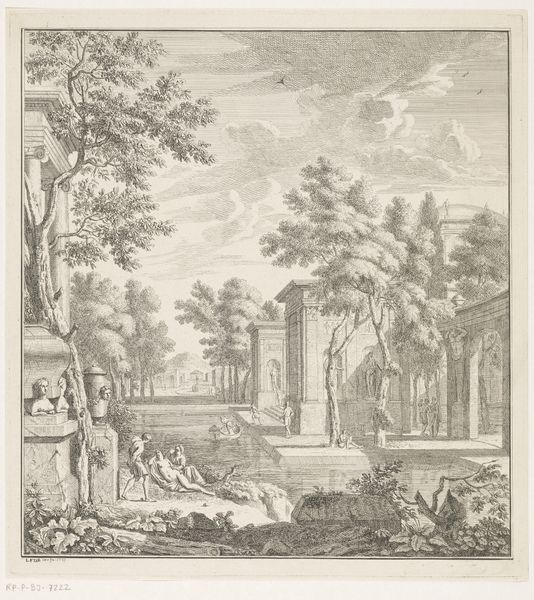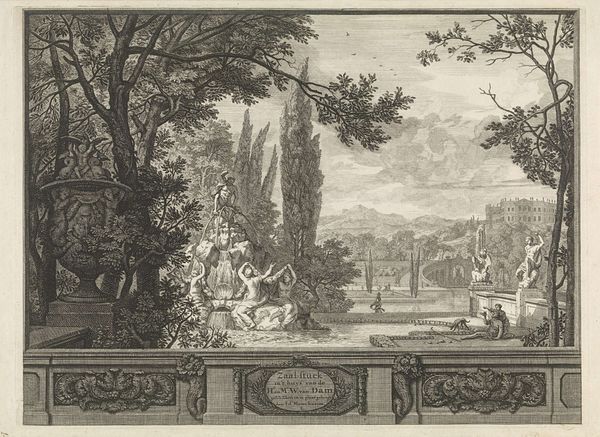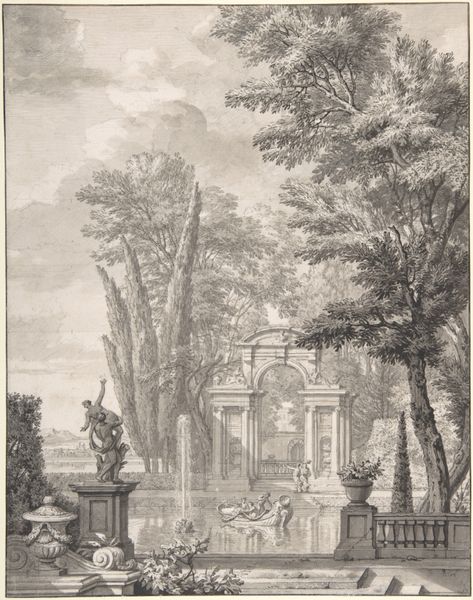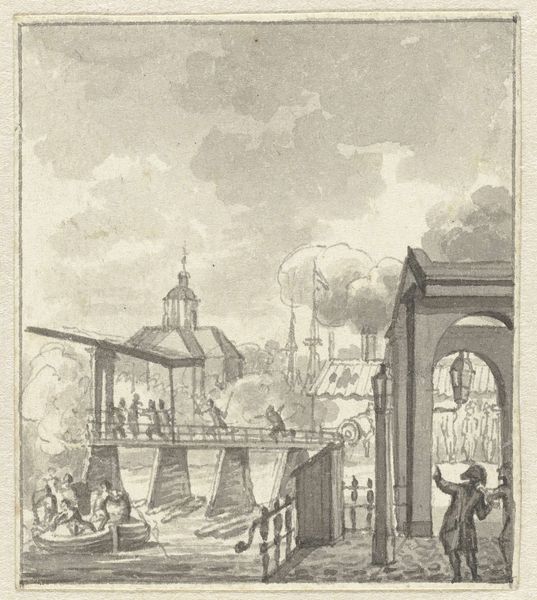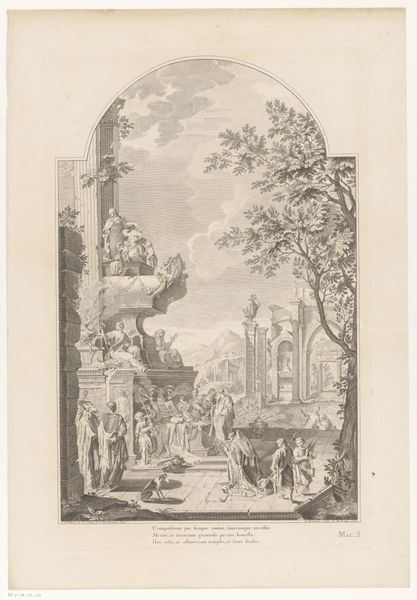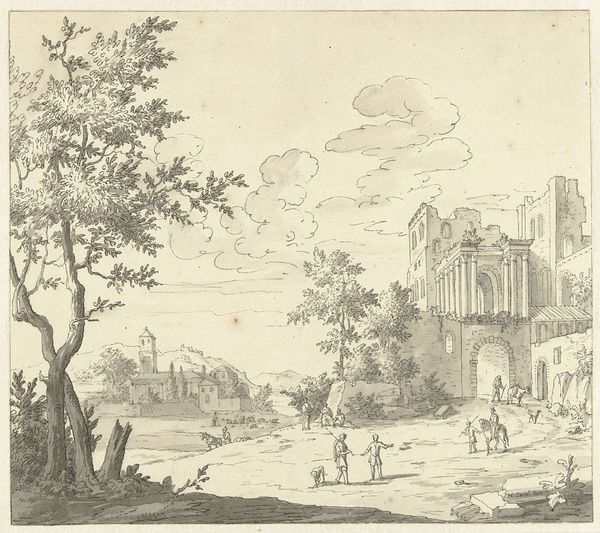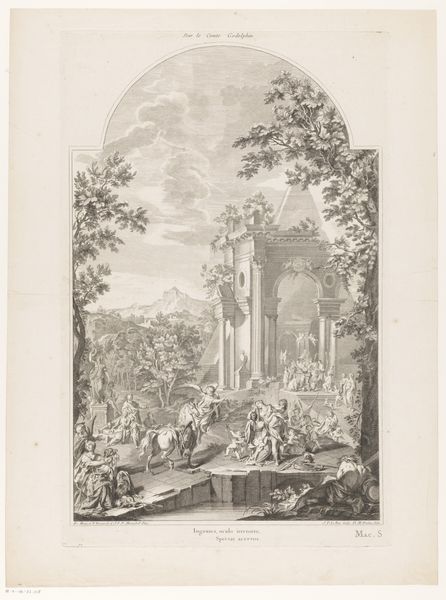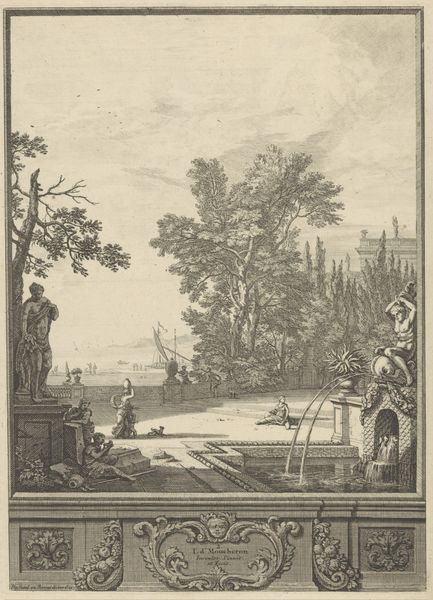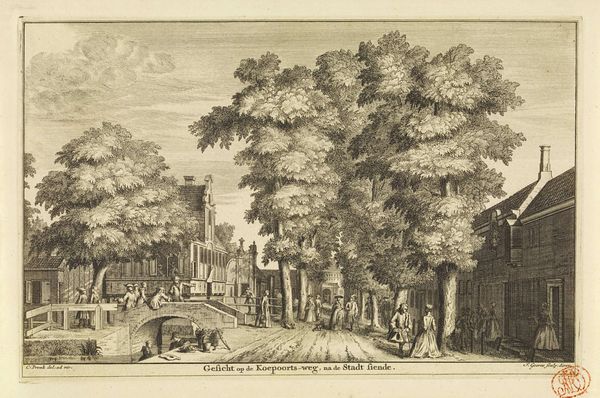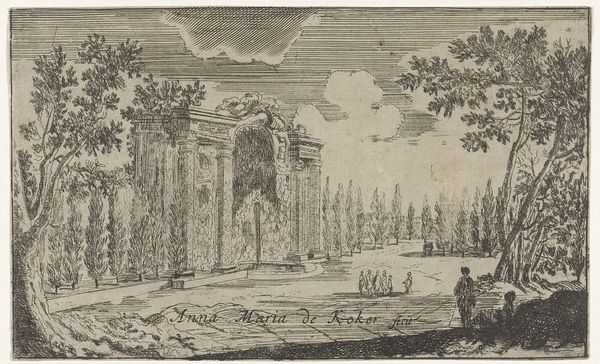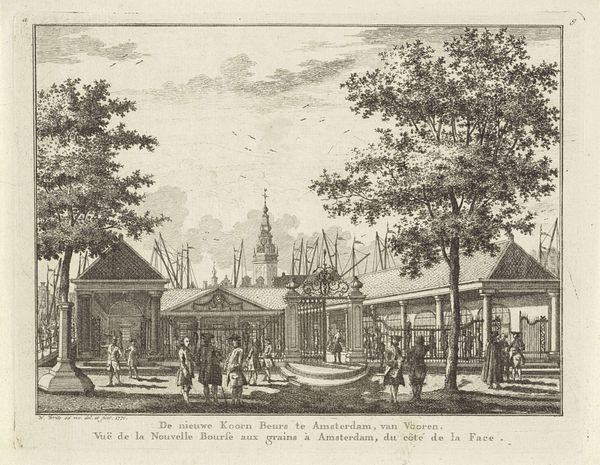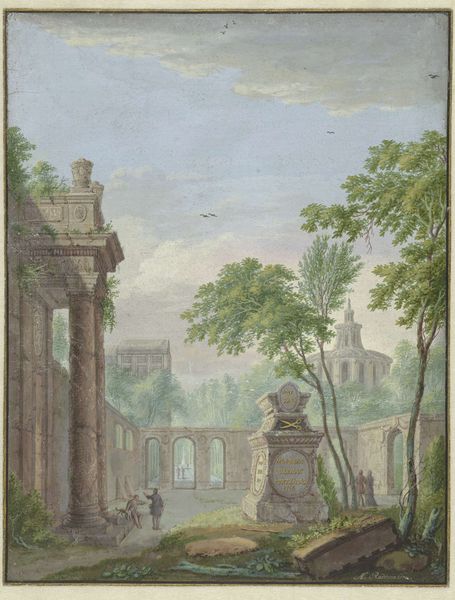
drawing, pencil, pen
#
architectural sketch
#
landscape illustration sketch
#
drawing
#
garden
#
quirky sketch
#
baroque
#
mechanical pen drawing
#
pen sketch
#
pencil sketch
#
landscape
#
classical-realism
#
personal sketchbook
#
pen-ink sketch
#
pencil
#
pen work
#
pen
#
cityscape
#
initial sketch
Dimensions: height 283 mm, width 234 mm
Copyright: Rijks Museum: Open Domain
Curator: Let’s take a moment to consider "Parkgezicht," a drawing rendered in pen, pencil and grey wash attributed to Isaac de Moucheron, dating sometime between 1677 and 1744. What are your initial thoughts? Editor: Dreamy, a little melancholic. All those elegant figures lounging, but somehow…isolated? It feels like a stage set waiting for a drama. The light, muted tones only add to this effect, it's not as alive as it could be for a garden. Curator: Indeed, this drawing exemplifies the Baroque garden design of the period and the complex social hierarchies reflected within such constructed landscapes. The aristocracy sought to exhibit power through gardens. De Moucheron’s landscape drawing illustrates these very controlled environments that offered specific, intentional social scripts. Editor: Scripted leisure, right? All those sculptures gazing out like they're overseeing a particularly dull play. There's a wonderful sort of voyeurism here. Curator: Certainly. The gazes intersect in ways that speak to systems of surveillance as well as privilege. We could look at this through a feminist lens, noting how women are positioned, in what activities they seem to participate, and how their visibility intersects with class status in this hyper-structured, male-dominated landscape. Editor: It definitely feels coded. I imagine myself stepping into this drawing – but where do I even fit? I feel very much like an outsider gazing in, trying to decode the garden’s visual language. Curator: Right – this controlled natural world offers an intriguing visual text that embodies both aspiration and exclusion. This type of spatial control, where certain groups are granted access, and other groups, restricted, informs everything from city planning to resource distribution today. Editor: It makes you wonder, doesn't it? Whose gaze are we even meant to align with? I mean, is it the artist's, who so precisely recorded all this rigid elegance? It's so…self-aware somehow. Well, thanks, I feel unsettled, thoughtful, ready to question the social choreography of my next garden visit. Curator: My pleasure. Examining de Moucheron’s drawing beyond its aesthetic value unveils important commentary on how power operates within the built and natural environments, making it exceptionally relevant to the contemporary world.
Comments
No comments
Be the first to comment and join the conversation on the ultimate creative platform.

